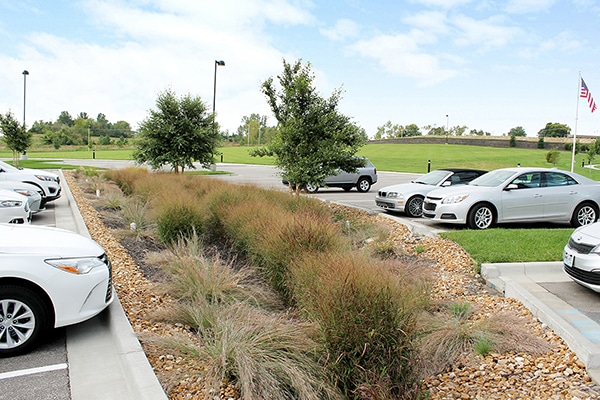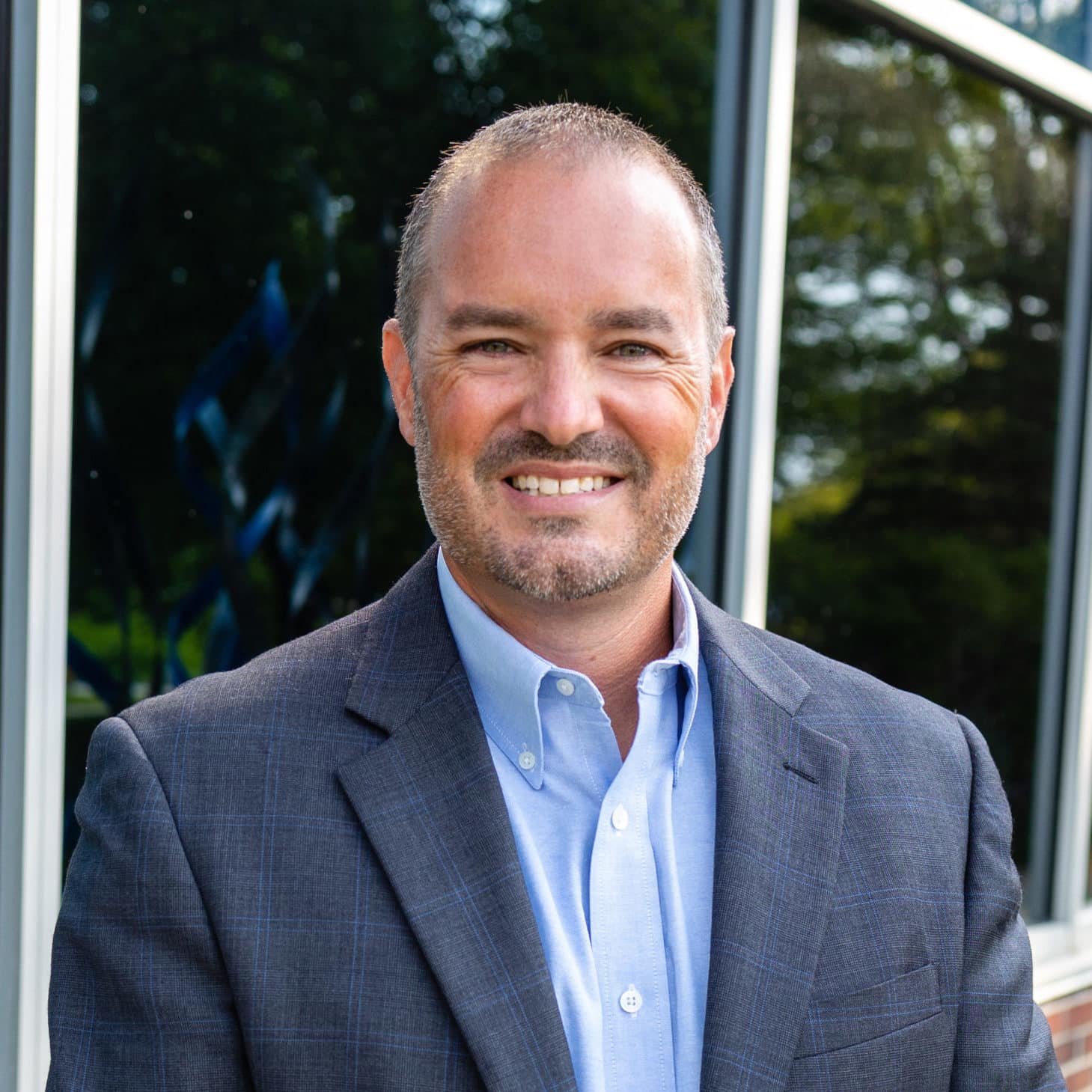By taking a sustainable approach to the landscape and site design, developers can save money on maintenance costs while positively impacting their communities and the environment.

Bioswales, such as the ones designed for the Teva property, offer a sustainable approach to stormwater by providing an opportunity for additional landscape plantings while reducing the size of the required underground retention.
A sustainably driven design to achieve LEED or SITES accreditation is not a priority for every development project; however, environmentally conscious design is not limited to those seeking accreditation. By taking a sustainable approach to landscape architecture and site design, developers can save money throughout the lifetime of a facility while positively impacting their community and the environment.
As a landscape architect in McClure Engineering Company’s development services department, Greg Pfau specializes in helping developers with an array of facilities to positively impact what’s known as the three Ps of the triple bottom line – people, planet and profit.
“For me, it’s just the right thing to do; it’s about being socially responsible,” said Pfau. “Sometimes there’s a misconception that sustainable solutions are large and expensive, but for me it’s about doing the little things that can benefit the owner, the community and the world.”
Stormwater solutions, and irrigation and plantings, and lighting design represent areas where landscape architecture and site design decisions can make a difference without significantly increasing the cost of the development. By tailoring the approach to each of these areas, Pfau helps his clients make socially conscious choices that are best suited for their needs, site conditions and business.
Stormwater Surface Retention
Addressing stormwater and site drainage offers an opportunity for developers to consider sustainable solutions. By using surface storage, such as a bio-retention cell or a rain garden, developers can reduce underground storage of stormwater while also incorporating additional landscape plantings to enhance the projects aesthetics.
“Approaching stormwater in an environmentally minded way can provide additional landscape planting opportunities and reduce the requirement for below-grade retention, which can be very expensive,” said Pfau.
For a recent project, Pfau was able to help reduce the size of the underground retention for the site by incorporating 20-foot islands into the parking bays with bioswales, which are essentially planted ditches with native grasses or cultivars. These areas that can typically store 9 to 12 inches of stormwater on the surface, and the deep-rooted plants help the water to infiltrate the soil at a rate that it can be absorbed.
“When designing a bioswale or bio-retention cell, we can design for very different aesthetics, either very native or much more manicured depending on the desired appearance for the developer,” said Pfau. “It’s a great way to take something you would have planted for aesthetic reasons and enhance it to be something good for the environment and community.”
Landscape Irrigation and Planting Design
“Irrigation and planting really go hand in hand,” said Pfau. “Reducing irrigation saves money, and this can be influenced by the plants selected for a site as well as the approach to the irrigation system design itself.”
By using his experience with irrigation systems, Pfau was able to positively impact the water use at MEC’s Lenexa office. Pfau implemented the use of an evapotranspiration manager, which tracks humidity, temperature trends, and rainfall, and irrigates the property based on this information to avoid overwatering. Since its implementation, the system is anticipated to reduce the water bill by about 40 percent while also preventing parking lot asphalt damage from excess watering.
“Water is an important resource to preserve, and there are some positive ancillary benefits that happen as you preserve water and use this resource responsibly on a property,” said Pfau. “As rainfall amounts and climate changes continue, water consumption is going to be an important consideration for landscaping.”
To further address water consumption, Pfau uses xeriscaping techniques, where appropriate, to tailor his planting selections to reduce the amount of water and irrigation needed. By using native grasses or hybrid plants that are drought resistant, owners can have an attractive, low-maintenance landscape and water less frequently.
“You are seeing more grasses and native plants incorporated into landscape design trends,” said Pfau. “You can get creative with it.”
Lighting and Light Pollution
Lighting design can be a significant component of a property’s aesthetics and increase its appeal to the public. Lighting also offers an opportunity for developers to consider environmental impact and maintenance cost savings.
The Illuminating Engineering Society (IES) and the International Dark-Sky Association (IDA) have a program to reduce light pollution because of its negative impacts on animals’ sleep, reproduction and migration behaviors. Working in collaboration with MEC’s electrical engineering department, Pfau supports the use of the IES standards, which outline light color recommendations, as well as fixture shapes and shields to reduce light pollution from a development’s outdoor lighting.
“A lot to municipalities have a required footcandle level, which is meant to address light pollution and safety for site users, as well as to take homes and neighborhoods into consideration,” said Pfau. “Additionally, LED fixtures are environmentally friendly, because they require less power. They also reduce maintenance costs for owners because of an increased lifespan of the fixture itself.”
Another approach for owners to save on energy costs while reducing light pollution is to use lighting controllers that dim when no one is near the building or facility or during times when the use of the facility may be minimal.
“There is no reason that sustainable design has to be expensive or unattractive. With ample planning and the right plant selection, lighting and sight design, you can create a beautiful, socially responsible site that offers long-term cost savings,” said Pfau.

















